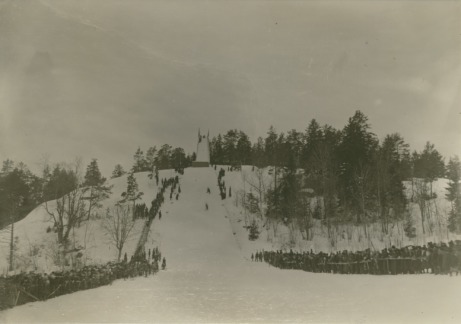Did you happen to know that the ironworks has been a hot spot for ski jumping for decades? We have had lots of amateur and professional ski jumpers and competitions for decades.
Ski jumping originated in Telemark, Norway, in the early 19th century. The skijumpers way of landing in the ‘telemark’ position derives from this. The first ski jumping competitions in Finland were held in Katajannokka, Helsinki, in 1885. It was not until 1905 that the first ski jump tower was built there. It increased the speed so that the jumps were 25 metres long. The tower was dismantled in 1939.
Doktorsbacken was the first ski jumping place in Fiskars, and you are very close to it. It is a naturally steep hill, where ski jumping began as early as 1919. The ski jumping activities at Fiskars were led by two-time Finnish Ski jumping Champion August Jansson, who was an engineer by profession, and the manager of the Ironworks’ workshop. A jumping tower was later built on Doktorsbacken, as a result of which the jumps could be as long as 24 meters.
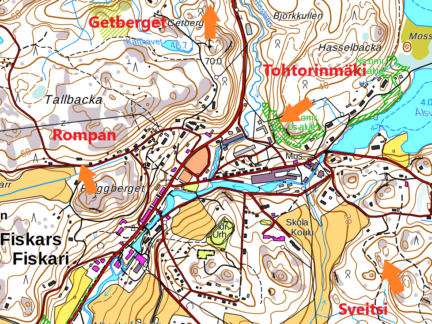
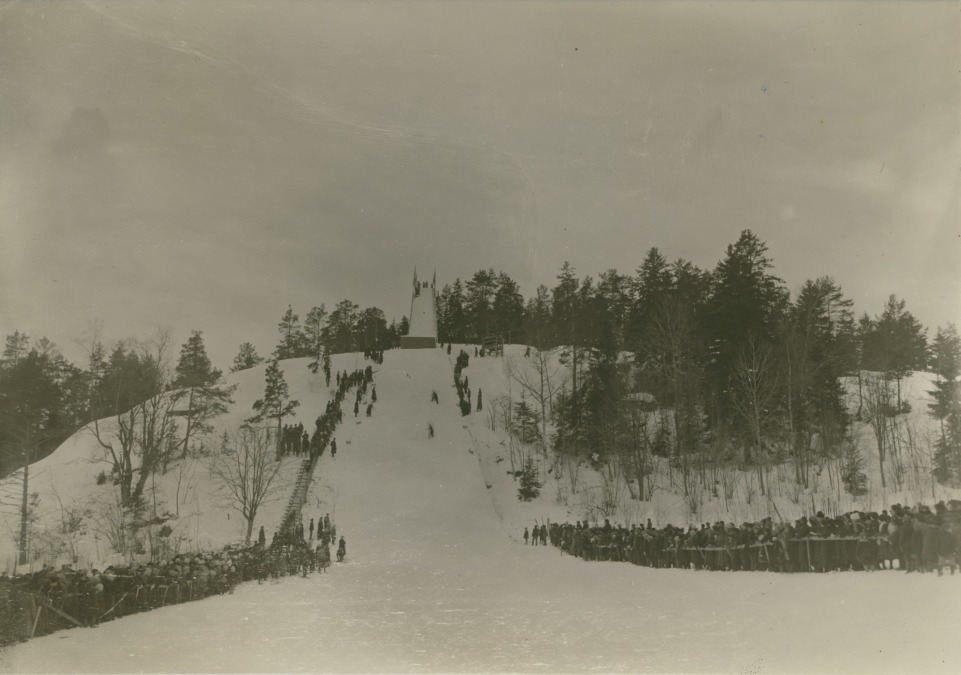
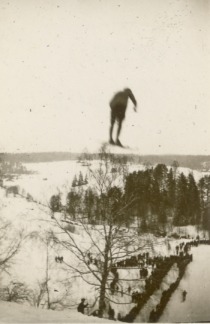
Photo Fiskars Museum
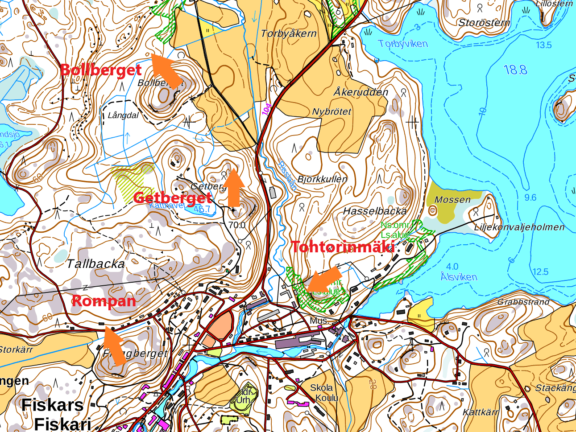
Getberget was the second ski jumping spot directly on the opposite side of the first ski jump, Doktorsbacken. Looking from the museum, it’s located in the direction of Antskog. A new, magnificent tower was built there and the opening ceremony took place on March 19th 1922. Seventy ski jumpers took part in the opening games, and it had 3,000 spectators. The Fiskars Winter Games were held in 1970 for the last time. Getberget’s record jump is 39 metres, and it was made in 1924.
In chronological order, the third ski jump hill in Fiskars is Bollberget. It was built partly by FIF (Fiskars idrottsförening) volunteer work in 1939. This hill was the third highest in Finland, right behind the ones in Salpausselkä in Lahti, and Pöyliövaara in Rovaniemi. Ski jumping was a winter hobby for many children in Fiskars. Back then it was harder to get the equipment for ski jumping. Luckily, the ironworks’ smiths and carpenters were able to help the children in making their own skis. These skills were taught during courses for young enthusiasts. A jump of 55 metres in lenght was jumped at Bollberget during training! Rompan is a hill by the Flaggberget-hill, where jumps of about 20 metres were made.
Sveitsi (‘Switzerland’) was the ski jumping site of Fiskarin Työväen Urheilijat. In the old days, small hills were built in suitable places where enthusiast ski jumpers could practice jumping. During this time, the golden age of ski jumping in Fiskars started coming to an end, and in 1970 the Fiskars Winter Games were held for the last time. Fiskars’ biggest ski jumping heroes were Uuno Suominen and Yrjö Kivivirta, and they also won the Finnish national ski jumping championship.
Literature and information:
- Fiskars IF 75 år 1915-1990, Kurt Westerholm 1990
- Fiskarin Urheilijat –47 ry (Fiskarsin Työväen Urheilijat) 60-vuotishistoriikki, ed. Laura Salama 2007
- Mäkihyppyä Fiskarsissa, Ta Plats –tidning nr 22, Kåre Pihlström 2020
- Mäkihyppyä Fiskarsissa, Koti Fiskarsista-blogi, Kåre Pihlström 11.1.2019
- Jouko Vahtola: Suomen mäkihypyn historia, Yle Lappi, Juha Pikkarainen 13.3.2012
